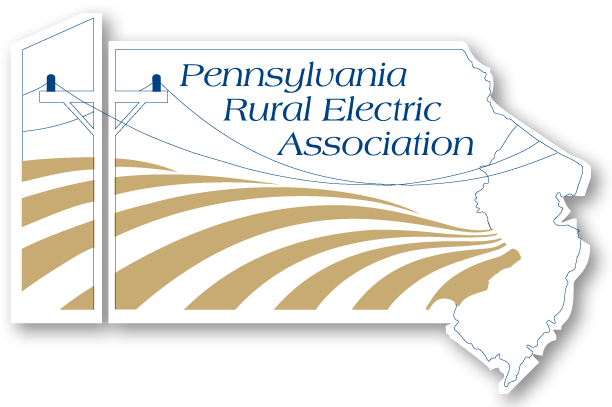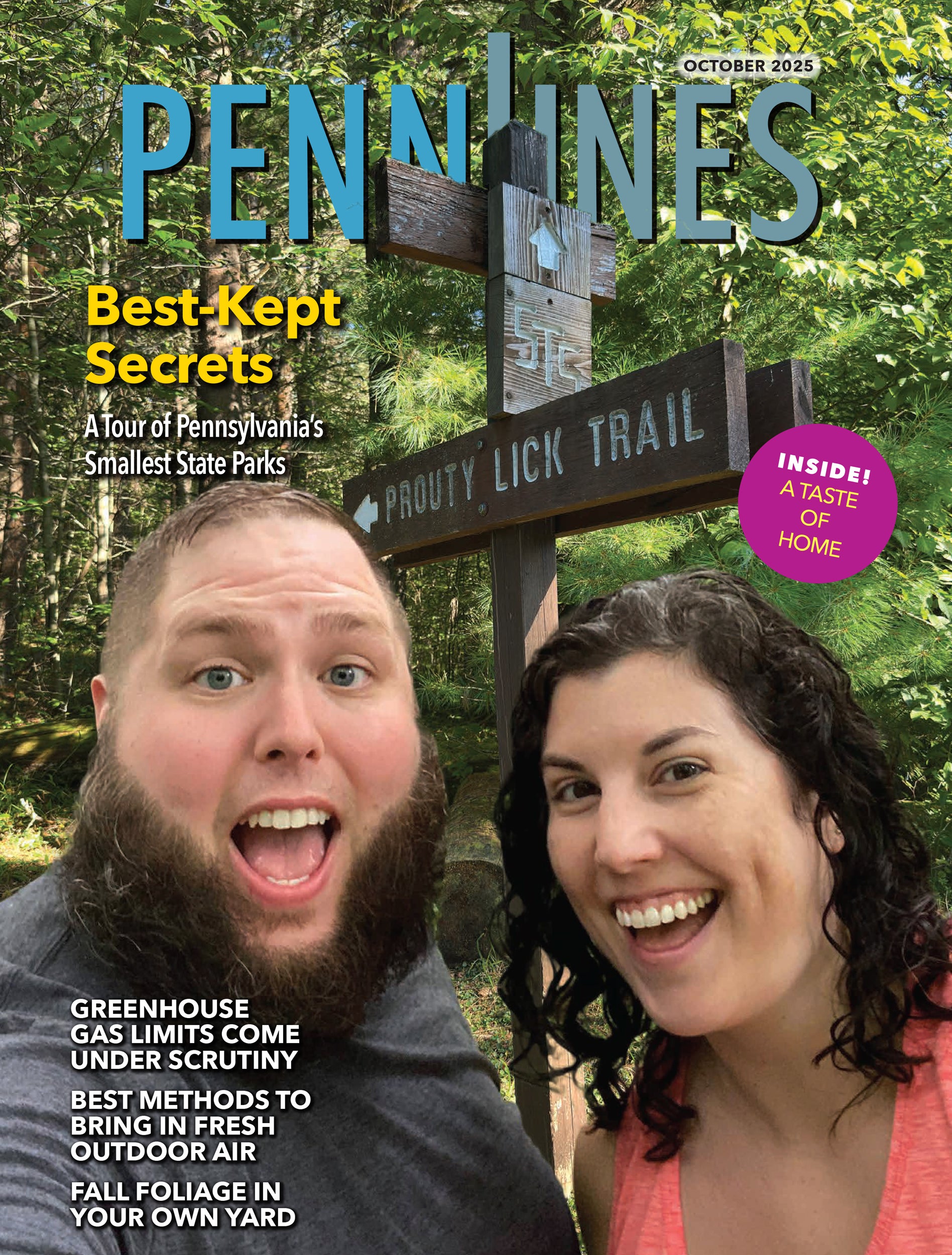Best-Kept Secrets
A Tour of Pennsylvania's Smallest State Parks
By Jeff Fetzer
Penn LinesContributor
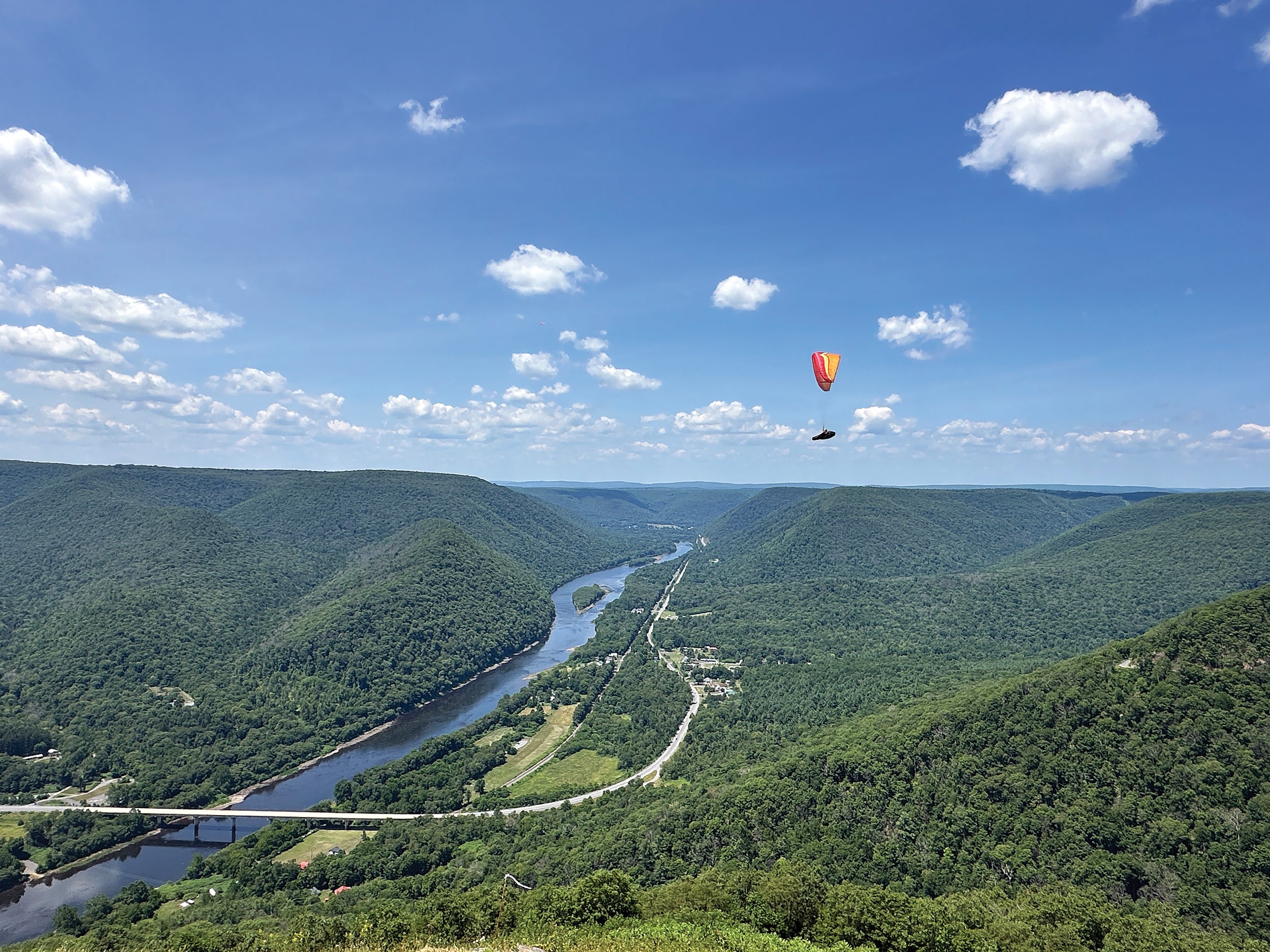
HANGING AT HYNER: A paraglider soars above the Susquehanna River after launching from a platform at the overlook at Hyner View State Park in Clinton County. The park, one of Pennsylvania’s smallest, is known for its breath-taking panoramic view of the river valley. photo by Christian Alexandersen
Pennsylvania’s biggest and best-known state parks — Presque Isle, Ohiopyle, Ricketts Glen, Worlds End and a score more — draw millions of visitors each year. But scattered across the state are a handful of parks so small or remote they almost defy discovery.
They’re some of the state’s best-kept secrets, and that’s part of their allure.
Upper Pine Bottom State Park, a blink-and-you’ll-miss-it pull-off along state Route 44 in Lycoming County, received just 662 visitors in 2024, the lowest recorded attendance among the 124 state parks. Interestingly, the state didn’t even bother to tally visitation numbers for Prouty Place State Park in Potter County.
Maybe they couldn’t find it. I can relate.
“You can’t get there from here,” I muttered as my GPS insisted I turn right onto the remote Prouty Lick Road. The GPS claimed the park was a little more than 2 miles ahead. A yellow gate across the forestry road told me otherwise. With no cell service and no paper map, I turned to a trio of hikers for help.
The hikers, a middle-aged woman and a young couple in their 20s, eyed me suspiciously. No, they had never heard of Prouty Place State Park. They hailed from New York City and were spending the day exploring the Pennsylvania Wilds.
The young man in the group pulled out his cellphone, and a faint signal slowly allowed a map to materialize; it showed an alternate route to the park, the aptly named Wild Boy Road — and off I went. About a half-mile in, a massive maple tree across the road stopped me in my tracks. Maybe I really couldn’t get there from here.
I backed out then backtracked to Route 44, where I received a cell signal that rerouted me to a passable road to the park.
A picnic table and a porta potty
As I neared the entrance — 25 minutes after meeting up with the downed maple — I spotted a large black bear padding across the gravel road just beyond the park’s sign. It would have been a perfect photo to accompany this article, but by the time I retrieved my camera, the bear had vanished into the forest.
But I had finally arrived at my destination, and there wasn’t much to see.
The 5-acre park, void of visitors, was little more than an elongated clearing with a small parking area, a lone picnic table, a disabled water pump housed under a small pavilion and a bright blue porta potty.
There also was a whole lot of quiet to be found there. Not a single car passed by the park over the next hour. The only sounds were chirping birds, buzzing insects and the murmur of Prouty Run, a small wild trout stream that meanders through the park.
Even so, it felt like this was a special place. Across Pennsylvania, a handful of tiny state parks like Prouty Place offer something beyond acreage and amenities. They provide solitude, a gateway to wild and scenic beauty, and a sense of stumbling upon a site few people will ever look for or find.
“The smallest parks are unique, lovely little picnic areas off the beaten path that people can visit,” says Ryan Dysinger, assistant director of the Pennsylvania Bureau of State Parks. “They don’t have the large infrastructure and facilities as most state parks would, but they are important because they provide visitors with a nice, welcoming rest area, and many of them are close to state forest areas, which then open them up to thousands of acres for hiking and dispersed recreation.”
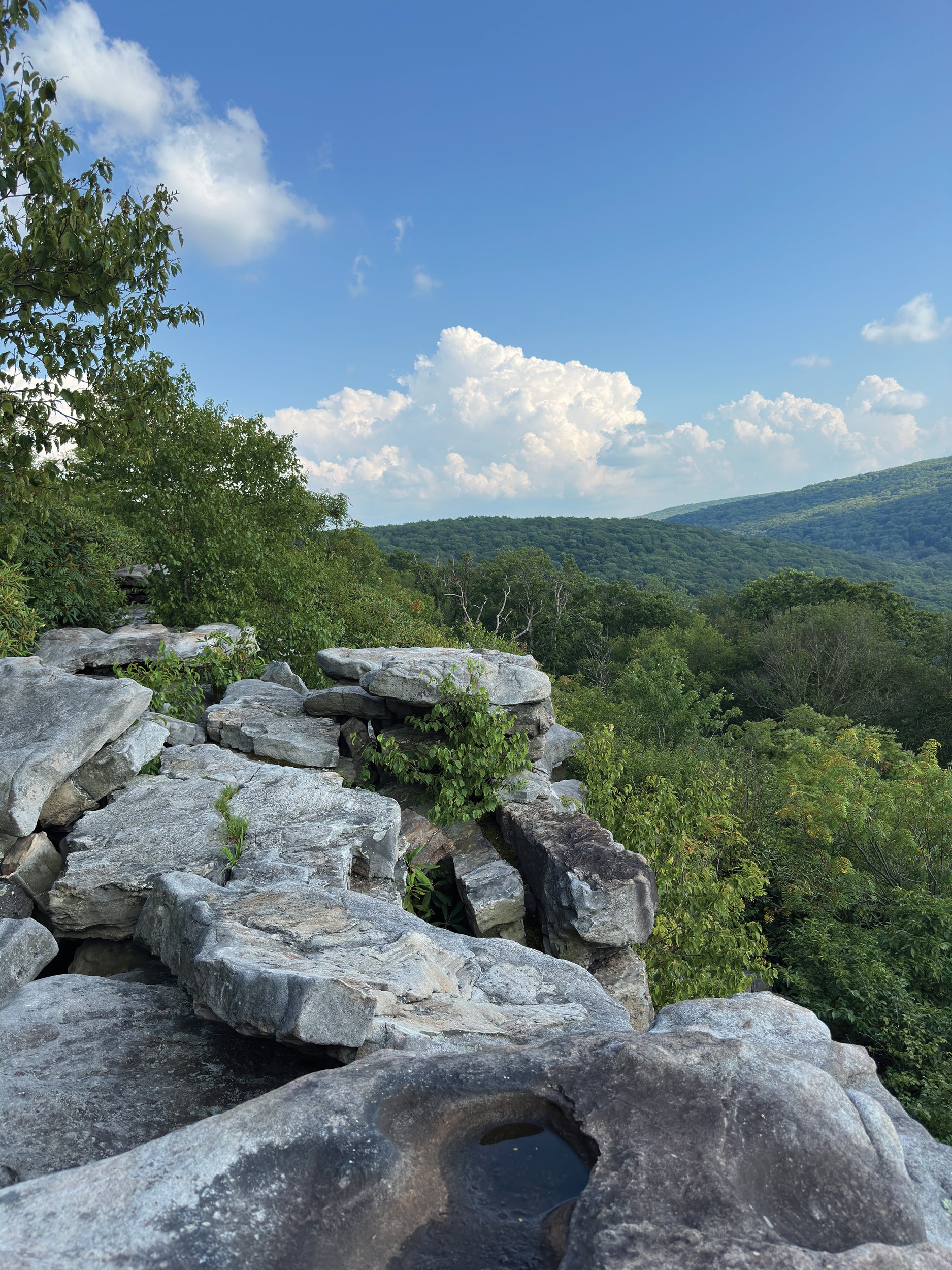
Laurel Summit
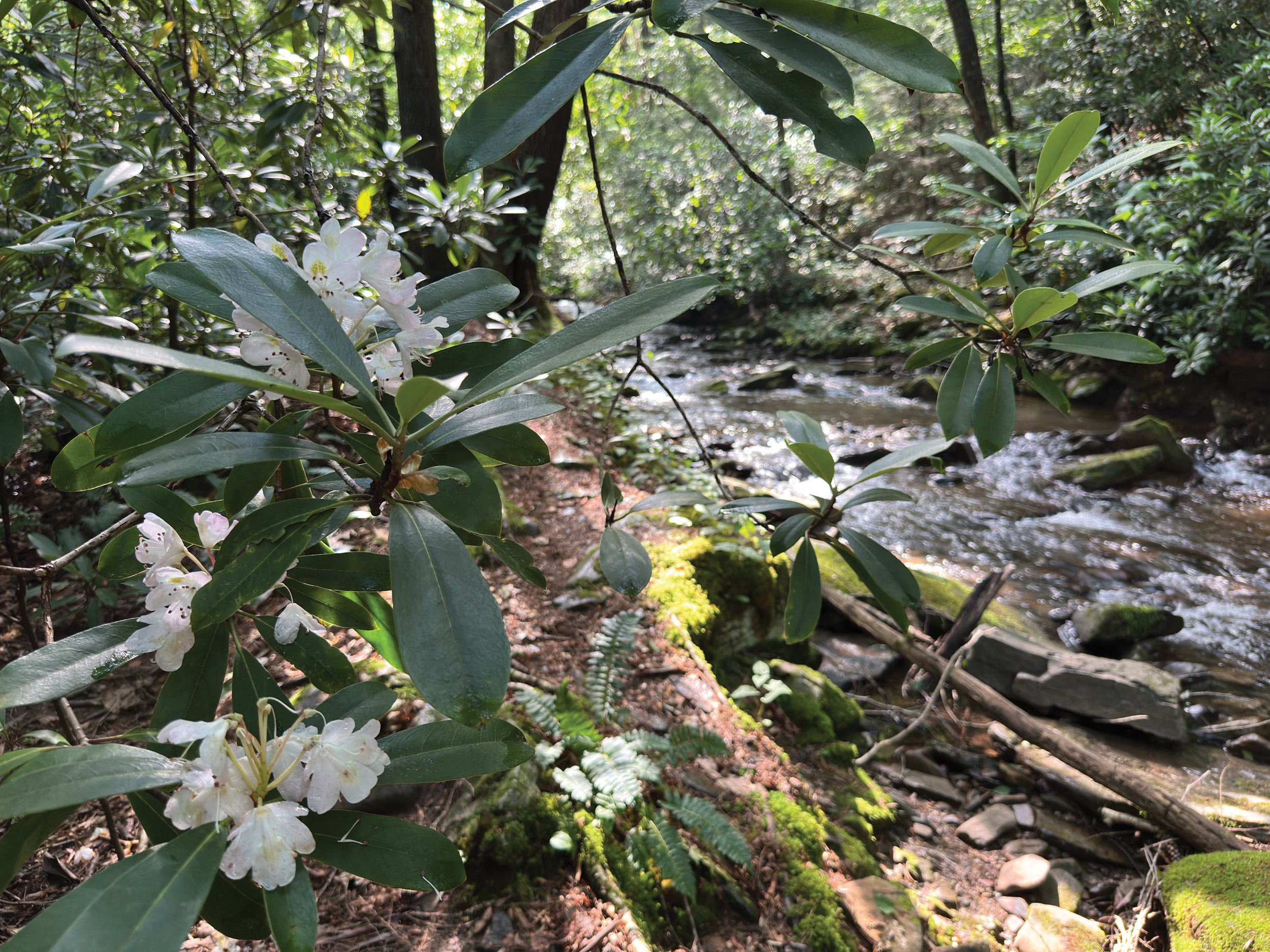
Upper Pine Bottom
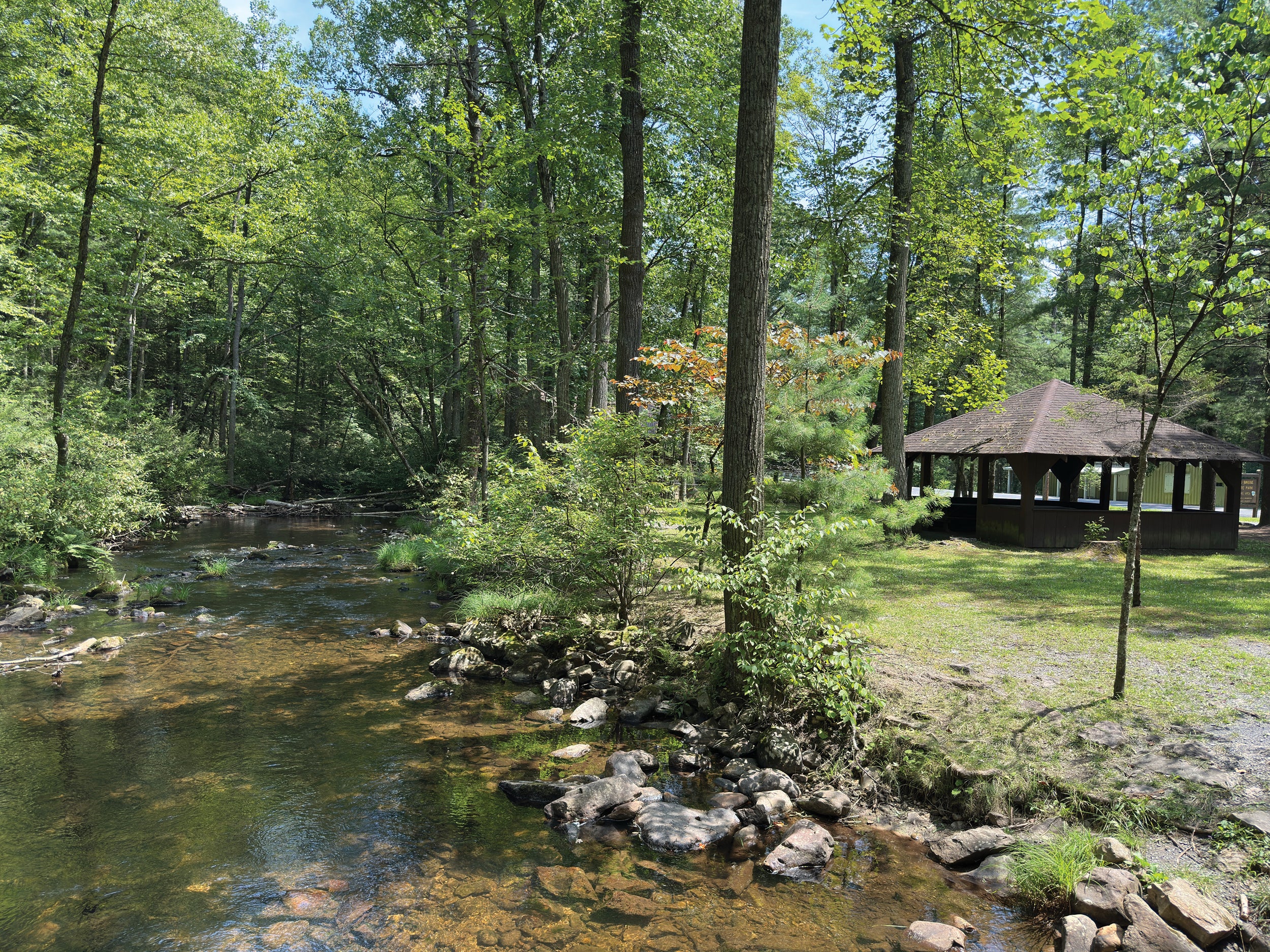
Sandy Bridge
Indeed. Within view of the Prouty Place Park sign stands a marker for Prouty Lick Trail, a spur connecting hikers to the 84-mile Susquehannock Trail that courses through the sprawling 265,000 acres of Susquehannock State Forest.
In addition to serving as a portal for hikers and hunters venturing into the adjacent state forest, the undeveloped park is primarily, though minimally, used as a rest stop or parking spot for anglers, says Jeb Miller, park manager for Sizerville State Park Complex, which includes Prouty Place.
“It’s a great place to fish, look for wildlife and have a little picnic,” Miller says, noting elk occasionally roam through the park. “It’s a pretty place out there. It’s peaceful and quiet.”
A bridge but no sand?
That is generally true of each of the state’s six smallest parks: McCalls Dam, 8 acres; Hyner View and Laurel Summit, both 6 acres; Prouty Place and Upper Pine Bottom, 5 acres each; and Sand Bridge, 3 acres.
Ironically, Union County’s Sand Bridge, the state’s smallest park, may be the least tranquil due to its proximity to a moderately traveled paved road. It is also the only state park under 10 acres not sited in a county served by a rural electric cooperative. McCalls Dam is in Centre County, a portion of which is served by Valley Rural Electric Cooperative (REC). Laurel Summit in Westmoreland County is about 16 miles from Somerset REC’s headquarters. Prouty Place, Upper Pine Bottom and Hyner View are in Potter, Lycoming, and Clinton counties, respectively, all of which are within the Tri-County REC service footprint.
Sand Bridge, located near Mifflinburg on the edge of Bald Eagle State Forest, features two rustic picnic pavilions built by the Civilian Conservation Corps (CCC) in the 1930s, an outhouse, several picnic tables, charcoal grills and a horseshoe pit. The historic pavilions are on opposite sides of Rapid Run, a small, stocked trout stream, and are connected by a wooden bridge.
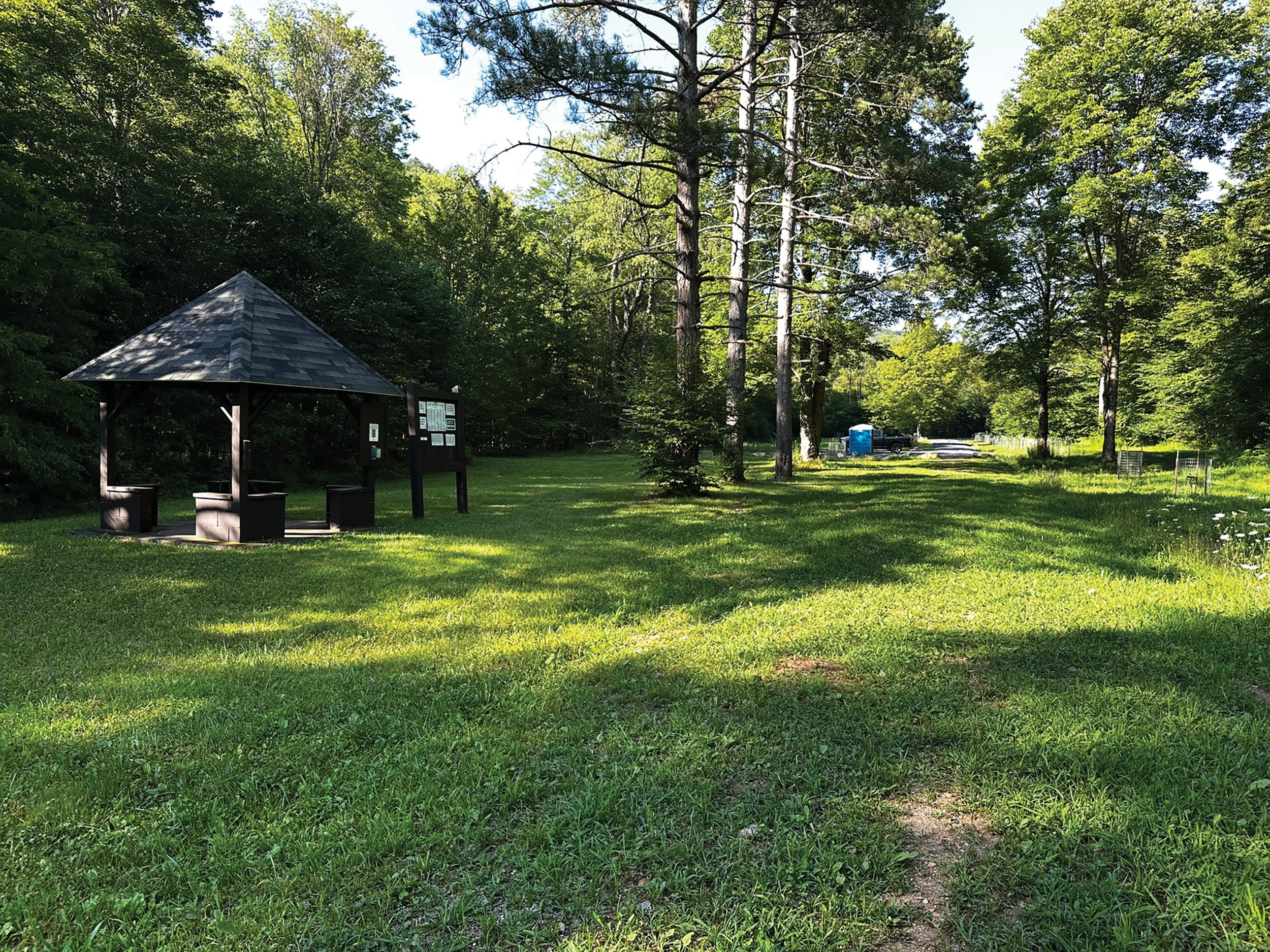
Prouty Place

Sandy Bridge
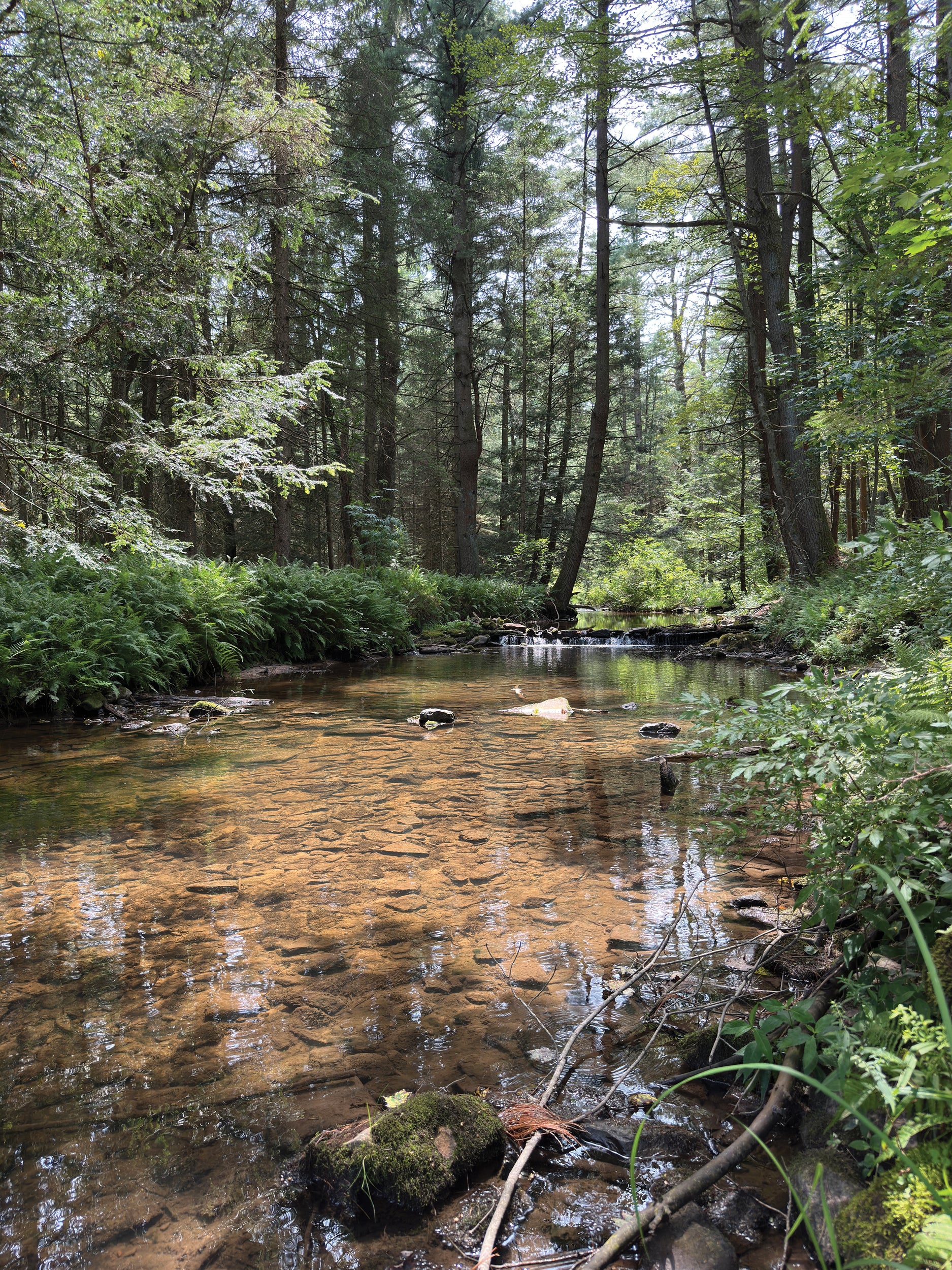
McCalls Dam
“Interestingly, nobody knows why it is called Sand Bridge,” says Mike Crowley, park manager for the R.B. Winter State Park Complex, which oversees Sand Bridge. “There is a bridge there, but no sand.”
The park, which drew 10,868 visitors last year, is primarily used by picnickers and anglers, he says. Northwestern REC member Holly Jacobs was one of them.
Jacobs, who lives in Erie County but owns a seasonal cottage in Crawford County, visited the park last August as part of a quest, known as the “See Them All Challenge.” Her goal is to visit each of the Commonwealth’s 124 state parks.
Since beginning the pursuit in 2021, she has ventured to more than 75.
“This challenge has been awesome,” Jacobs says, “because some of the parks, I doubt I would have ever visited or even known about without doing this. I love nature, and I love being out in it, and we have so much beauty here to see.”
Making a run for it
The tiny footprint of some state parks did pose a challenge for Christian Alexandersen, who lives in Cumberland County and made it his mission to run a mile in each park in 2021.
Alexandersen recalls an elderly fisherman eyeing him suspiciously as he stripped off his shirt and began running laps in the tiny parking lot and picnic area at Upper Pine Bottom State Park on a hot summer day.
“The guy packed up his fishing gear and left,” Alexandersen says, chuckling. “I’m sure he was thinking, ‘I don’t know what this guy’s doing, but I don’t want to be a part of it!’ ”
Alexandersen had never set foot in a Pennsylvania state park until he and his wife, Abby, visited Perry County’s Little Buffalo State Park during the COVID-19 shutdown in 2020.
“I was like, ‘This is really great. I wonder how many state parks we’ve got?’ ” he says.
At the time, there were 121, and since then, three more have been added.
“I thought, ‘That’s a lot of places to go visit,’ ” Alexandersen recalls. “And then my immediate next question to myself was, ‘I wonder how long it would take me to run a mile in each of them?’ ”
The answer: 224 days.
Alexandersen began his mission on Jan. 2, 2021, and completed it by mid-August of that year.
The experience led to a passion for state parks and public lands, which he has since parlayed into a biweekly podcast, “Hemlocks to Hellbenders.”
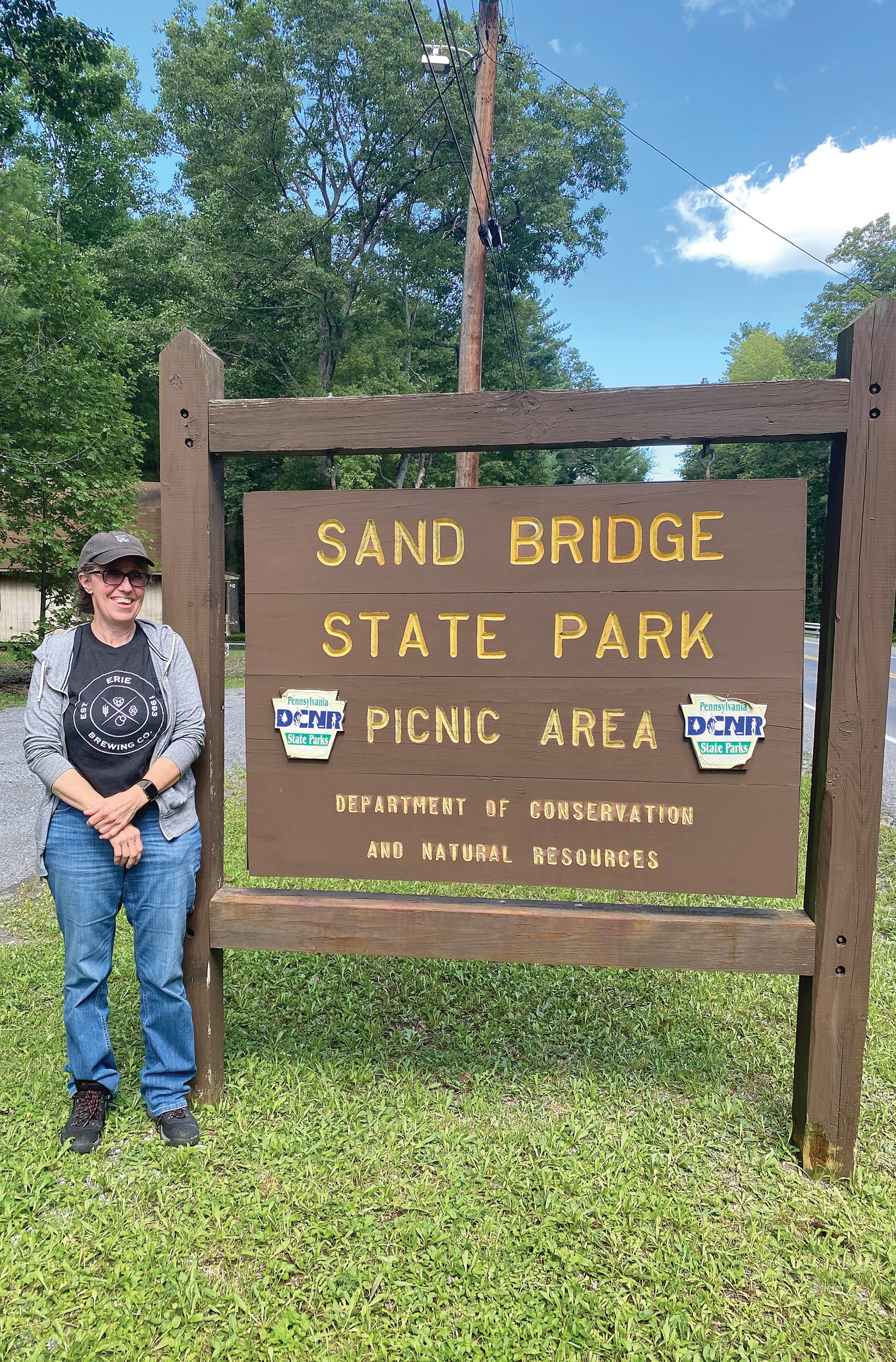
SEEING THEM ALL: Northwestern Rural Electric Cooperative member Holly Jacobs visited Union County’s Sand Bridge State Park in 2024 as part of the “See Them All Challenge.” She’s among those on a mission to visit all 124 Pennsylvania state parks. (Photo courtesy of Holly Jacobs)
“I go to state parks; that’s what I do,” the 40-year-old says. “It’s the thing I spend the most time on and where I find the most enjoyment. And the best thing about Pennsylvania state parks is that they are free. It’s affordable, accessible fun.”
Since the running challenge didn’t provide Alexandersen with much time to explore the parks, he has since revisited many of them, some multiple times.
“I have this weird love for Upper Pine Bottom, and I really can’t explain it,” Alexandersen says. “It’s not a park where you can really do much, but I enjoy it.”
He has returned at least three times since his initial visit and is captivated by the dense patch of great laurel that grows along the banks of the park’s namesake, Upper Pine Bottom Run.
Originally a public camping area carved out of state forest lands in 1923, the park fell under the watchful eye of the CCC in the 1930s. Camping is no longer permitted at the site, and the only amenities are two picnic tables, one usable and the other covered in bright green moss.
‘Going back to the basics’
Several miles north, off Route 44, travelers will find Hyner View State Park, the smallest to be featured on “Pennsylvania’s 25 Must-See State Parks,” a list developed by the state Department of Conservation and Natural Resources.
While the park itself is only 6 acres, the spectacular view from its mountain-top perch stretches for miles, delivering panoramic vistas of the Susquehanna River and surrounding mountains. The park also has a statue of a CCC worker and a monument dedicated to the state’s forest fire wardens. It’s popular with hang gliders, too.
“Hyner View is phenomenal,” Alexandersen says.
The park drew more than 30,000 visitors in 2024, the second most among state parks under 10 acres. The top draw in that category is 6-acre Laurel Summit State Park, which attracted 35,000 visitors last year.
At an elevation of 2,739 feet above sea level, Laurel Summit claims one of the highest altitudes among the state parks. It also serves as a trailhead for two popular foot paths that lead to dramatically different experiences: the Spruce Flats Bog Trail, a quarter-mile path that leads to a rare mountain-top bog bordered by wind-swept Atlantic white cedar trees — the only stand of its kind in Pennsylvania; and Wolf Rocks Trail, a 4.4-mile loop trail offering a stunning view of Linn Run Valley and Chestnut Ridge.
Corey Snyder, park manager for Linn Run State Park Complex, which includes Laurel Summit, says that while the state’s larger and more heavily visited parks are great assets, so are their little siblings.
“I can tell you exactly why [small parks] are so important,” he says. “This is about going back to basics, immersing yourself in the resource, surrounded by the trails, the sounds, and the smells. You’re not going to get that same experience at those larger, busier, crowded parks.”
I can relate.
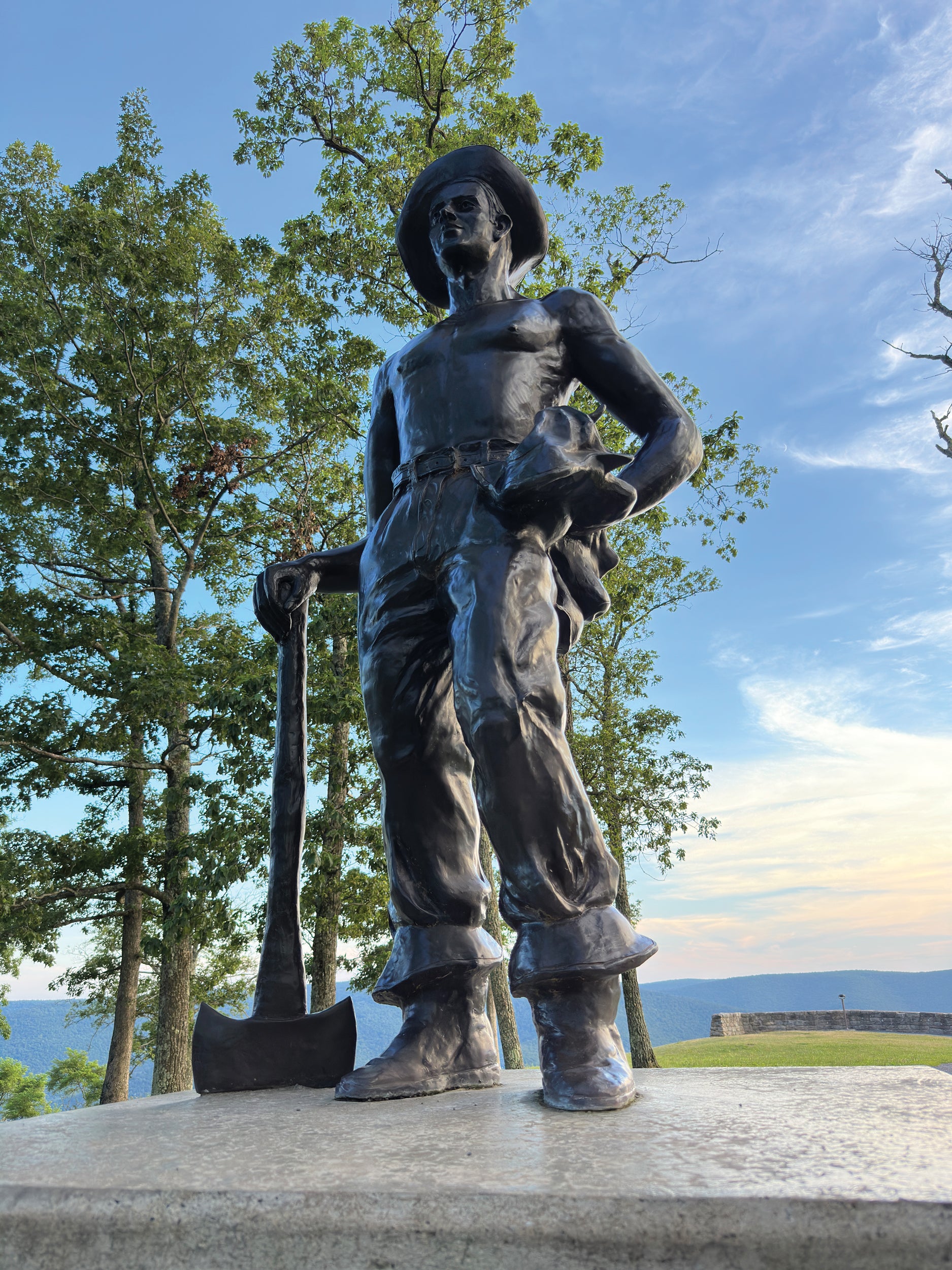
A LASTING LEGACY: A statue at Hyner View State Park in Clinton County commemorates the Civilian Conservation Corps (CCC) members who worked in Clinton and Potter counties in the 1930s. The CCC program was instrumental in creating and improving many state parks during the Great Depression, building structures, trails, dams, and planting trees. (Photo courtesy of Jeff Fetzer)
Worth the effort
My final two park visits for this article were to be Sand Bridge and McCalls Dam, which are separated by less than 8 miles. After poking around at Sand Bridge on a Saturday afternoon in July for about an hour, I was ready to set off for McCalls Dam, only to realize, again, that I had no cell service, so no directions to the park.
Knowing that the popular R.B. Winter State Park was along the route, I decided to drop by to get directions. The park was bustling with activity, and at the visitor center, a helpful staffer provided me with detailed instructions.
Though the drive was less than 4 miles, it seemed a world away. Located off a dirt road, McCalls Dam was the last park I visited, but the only one with people. A man dozed in a lawn chair, while his wife sat on a nearby bench, petting her dog as White Deer Creek flowed lazily in the background. After a short chat with them, I headed up a trail that petered out a short distance beyond a small seldom-used tent-camping site.
I returned to an empty picnic area. The only sound was the burbling of a small waterfall on the creek.
I found myself thinking about hidden gems like McCalls Dam State Park and how most people will never stumble upon them. These idyllic spots are tucked into the folds of a map, reachable only to those willing to take wrong turns, back track, and maybe meet a bear or two along the way.
But they are worth the effort. Just remember to take a paper map.
